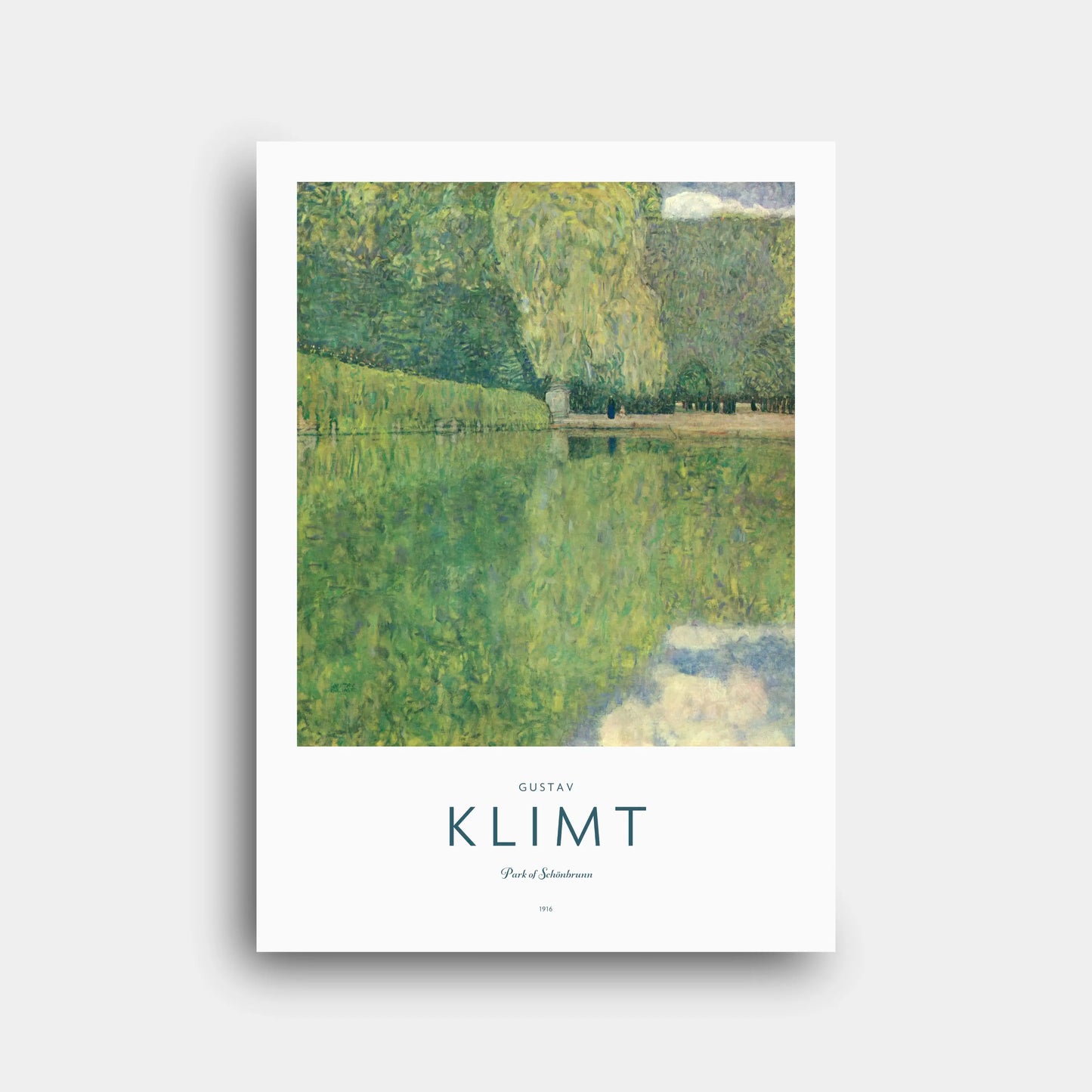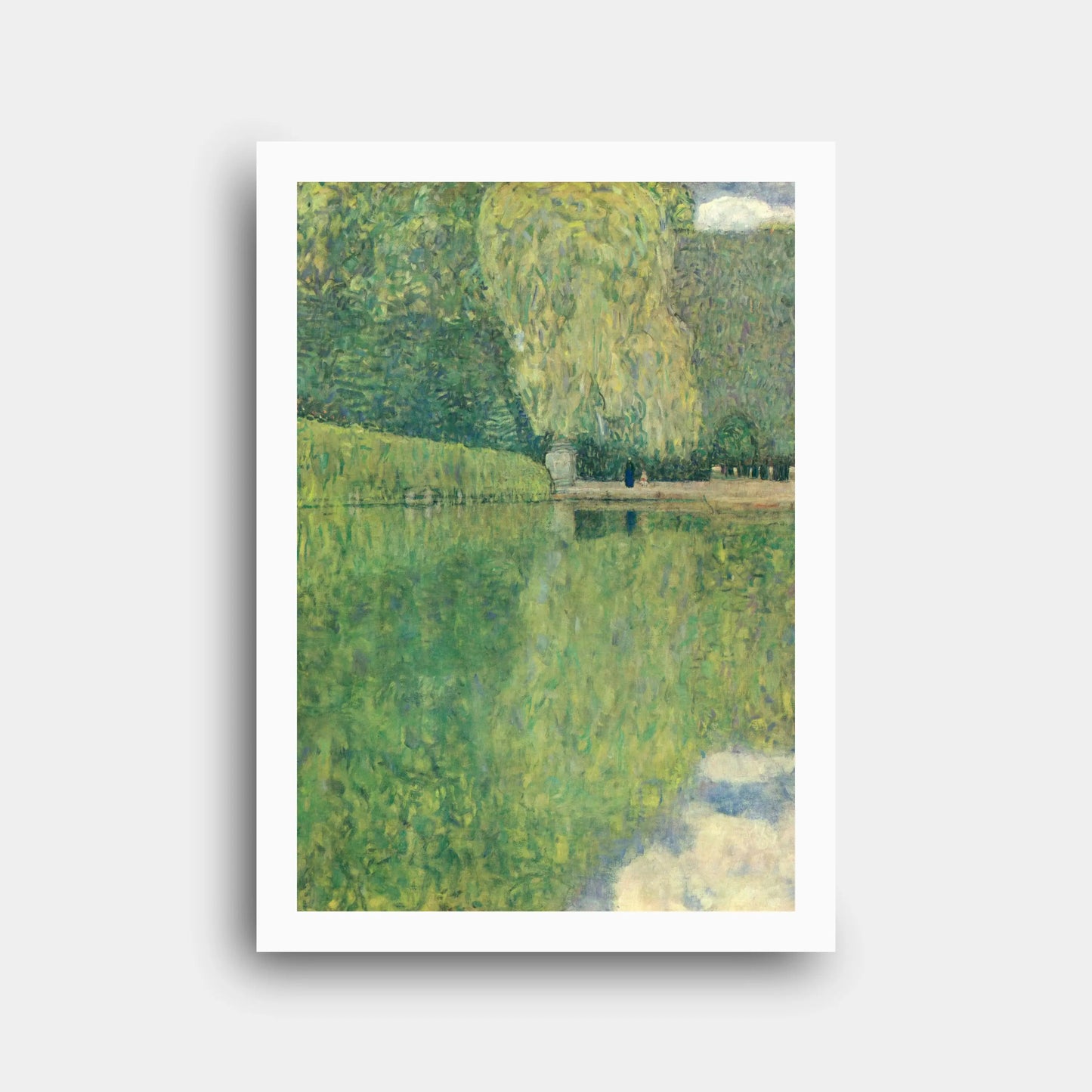Gustav Klimt - Park of Schönbrunn (1916) - Paper Poster N184
Gustav Klimt - Park of Schönbrunn (1916) - Paper Poster N184
Couldn't load pickup availability
Share
Paper Poster | Canvas Print | Digital File
1. Historical and Artistic Context
Gustav Klimt painted "Park of Schönbrunn" in 1916, during the final years of his life and in the midst of World War I. This was a period when Klimt had moved away from the gilded opulence of his earlier “Golden Phase” and was devoting more time to landscapes. By this time, Klimt was an established master of Viennese Symbolism, but he sought refuge from the turbulence of war in the serenity of nature. The Schönbrunn Palace gardens, historically associated with the Habsburg dynasty, provided a familiar and contemplative subject for his artistic exploration. This work reflects the painter’s late style, where abstraction, texture, and emotional resonance take precedence over decorative symbolism.
2. Technical and Stylistic Analysis
The composition of the painting is dominated by a reflective pond that captures the surrounding greenery and sky. Klimt’s brushwork is meticulous, relying on countless small, mosaic-like strokes that recall pointillist techniques but remain distinctly his own. The canvas is almost symmetrical, with the reflective water occupying a large portion of the visual field, producing a calm yet dynamic atmosphere. The human figures present in the background are minimized and nearly lost within the grandeur of nature, emphasizing his focus on the landscape as the central subject. The result is both naturalistic and abstract, blending realism with ornamental rhythm.
3. Symbolism and Interpretation
At first glance, "Park of Schönbrunn" is a straightforward depiction of a palace garden. Yet, Klimt transforms it into a meditation on reflection, time, and memory. The mirrored surface of the pond symbolizes the subconscious, a space where reality and perception merge. The absence of a central focal point encourages the viewer to wander visually, echoing the experience of strolling through a garden. By minimizing human presence, Klimt elevates nature as a source of spiritual and emotional renewal. The painting can be interpreted as a retreat from war and societal unrest into a timeless, contemplative natural sanctuary.
4. Technique and Materials
Klimt executed the work in oil on canvas, a medium that allowed him to layer colors and textures with depth. The square format, which he favored for landscapes, creates balance and stability, contrasting with the vibrancy of his brushstrokes. The surface of the canvas is rich in overlapping tones of green, yellow, and blue, applied with short, dappled strokes that dissolve boundaries between objects. This technique produces a shimmering, almost vibrating effect, where light seems to ripple across the foliage and water. His use of reflection is particularly effective, turning water into a second canvas within the composition.
5. Cultural Impact
"Park of Schönbrunn" illustrates the cultural dialogue between nature, history, and modernism. At the time of its creation, Vienna was grappling with political upheaval and the devastation of war, yet Klimt presented an image of quiet resilience through the enduring beauty of the palace gardens. The painting underscores the role of landscapes in early modernist art as both aesthetic subjects and metaphors for stability. Today, it resonates as a reminder of how artists sought solace and meaning in nature during times of uncertainty. Its impact extends into broader discussions of the role of art as both escape and reflection of cultural reality.
6. Critical Reception and Scholarly Interpretations
Art historians often view Klimt’s landscapes as essential but sometimes overshadowed components of his oeuvre. Critics highlight the meditative qualities of works like "Park of Schönbrunn," noting the way they transform decorative sensibilities into atmospheric depth. While his portraits command the most fame, his landscapes are increasingly recognized for their innovation in merging abstraction with natural observation. Scholars emphasize the connection between Klimt’s landscapes and Symbolist ideals, pointing out how they embody harmony, transience, and inner reflection. Modern exhibitions dedicated to his landscapes have drawn critical acclaim, showing a growing appreciation for this aspect of his artistry.
7. Museum, Provenance and Exhibition History
"Park of Schönbrunn" has been associated with Viennese collections since its creation, reflecting local pride in the depiction of the historic palace gardens. It eventually entered the holdings of the Leopold Museum in Vienna, which houses one of the most significant Klimt collections in the world. The work has been exhibited in retrospectives devoted to Klimt’s landscapes, where it is celebrated for its depth and serenity. Its exhibition history confirms its importance within Klimt’s late works and its ability to captivate audiences with its immersive natural beauty.
8. Interesting Facts
1. Klimt painted approximately 55–60 landscapes in his lifetime.
2. He almost always used square canvases for landscapes.
3. Klimt began painting landscapes seriously during summer holidays at Attersee.
4. The painting reflects the gardens of Schönbrunn Palace, a symbol of the Habsburg monarchy.
5. Unlike many of his portraits, Klimt’s landscapes rarely feature people.
6. Reflections in water are a recurring theme in his late landscapes.
7. The painting was created during World War I, a time of turmoil.
8. Klimt’s landscape style shows influence from Impressionism and Pointillism.
9. The Leopold Museum in Vienna currently houses this work.
10. Klimt’s landscapes are now highly prized by collectors, rivaling his portraits in value.
9. Conclusion
"Park of Schönbrunn" is a profound testament to Gustav Klimt’s late artistic vision. Moving beyond the gold and ornamentation that made him famous, Klimt embraced the subtleties of color, texture, and natural reflection. The painting exemplifies how he could merge Symbolist ideals with modernist experimentation, offering not just a depiction of a garden but a poetic meditation on nature, time, and serenity. Today, it stands as a cornerstone of his landscape oeuvre, capturing both the historical weight of its subject and the timeless beauty of Klimt’s artistry.











